Welcome
to correspondences. Our aim is to create lasting people connections across cultures through the medium of art.
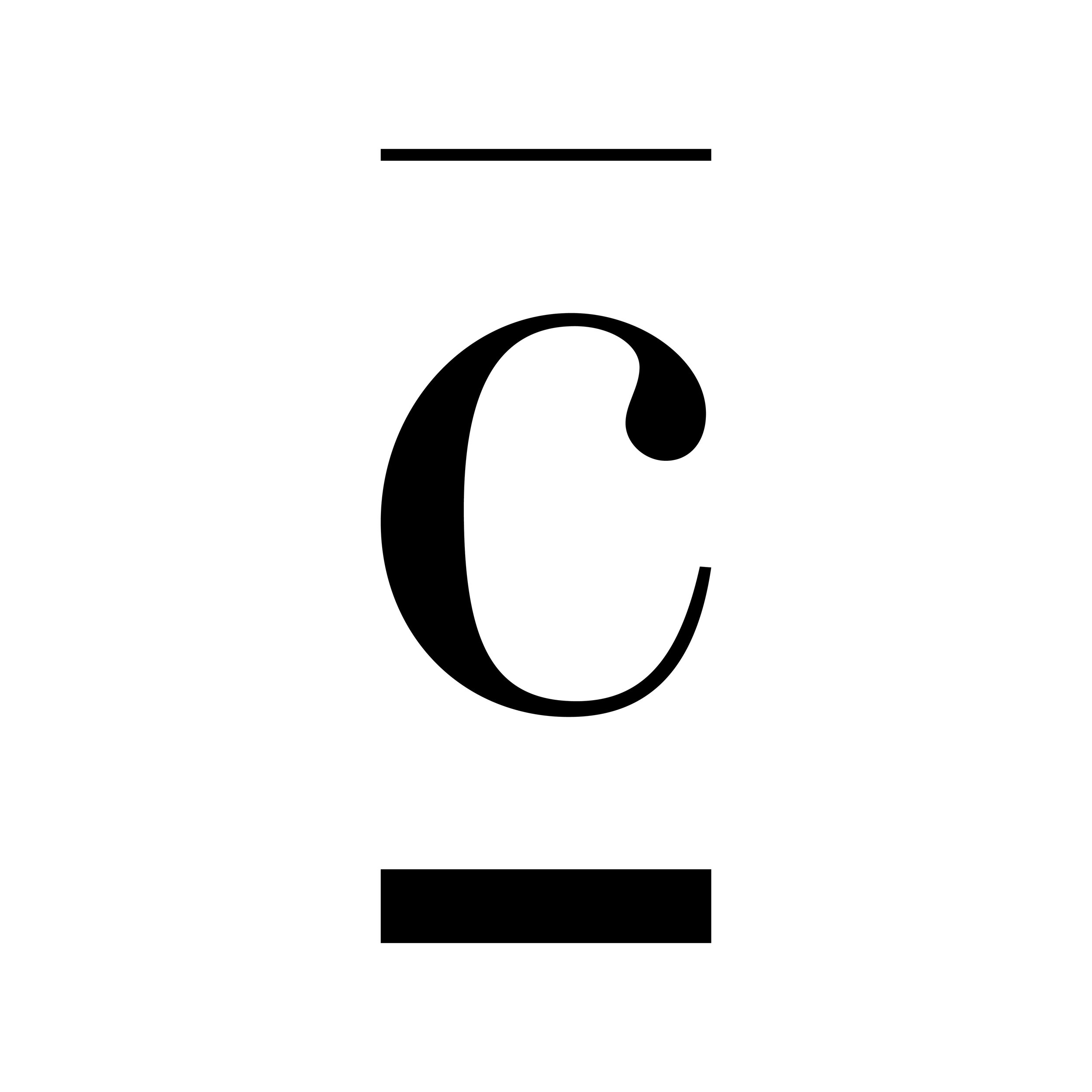
to correspondences. Our aim is to create lasting people connections across cultures through the medium of art.
From 17 February 2023 —
There is so much experiential memory in both our works, which are embedded with the daily reverberations of sound-making, the impressions from our walks together along the Birrarung and the Merri Merri, conversations about place and the natural world, and how we respond to the more ephemeral aspects of our surroundings (the sound of water flowing, light, wind, birdsong, the sun rising). I also like the way the tones of the grounds in Gen’s sound drawings are sometimes echoed in the beautiful colourings of the geological formations around the Birrarung, and which can be glimpsed in my photographic collages.
—Jessye Wdowin-McGregor


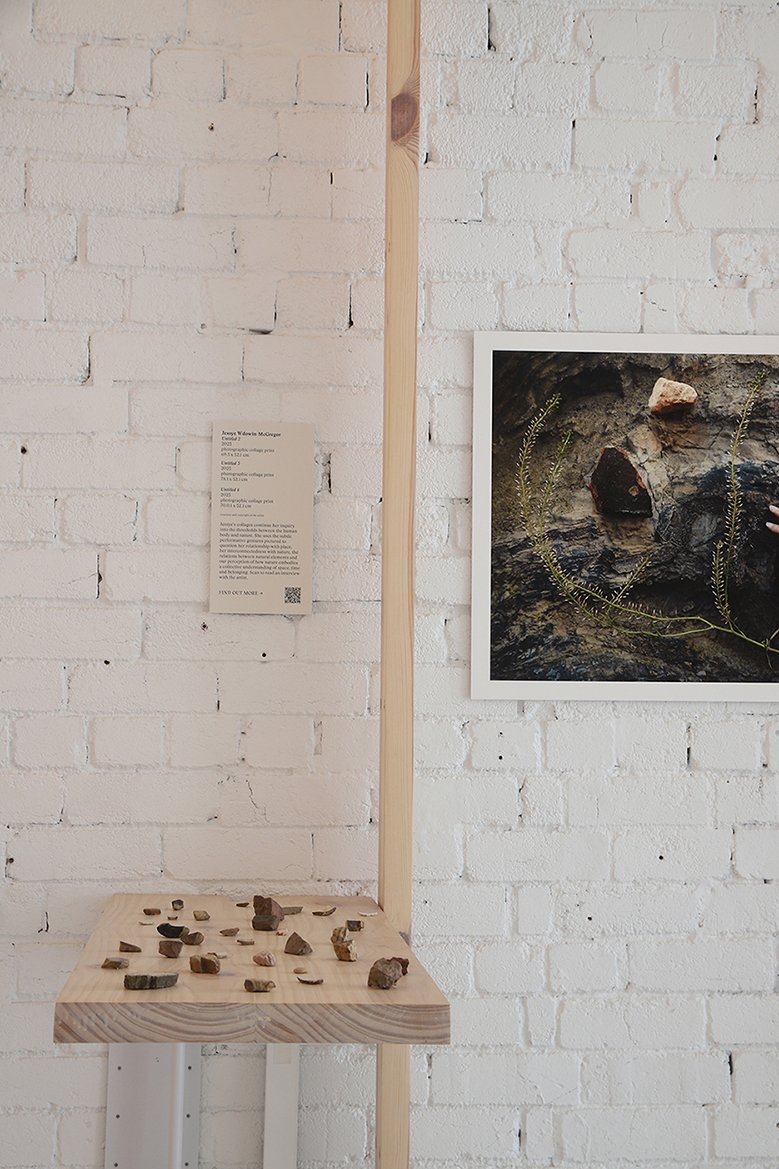
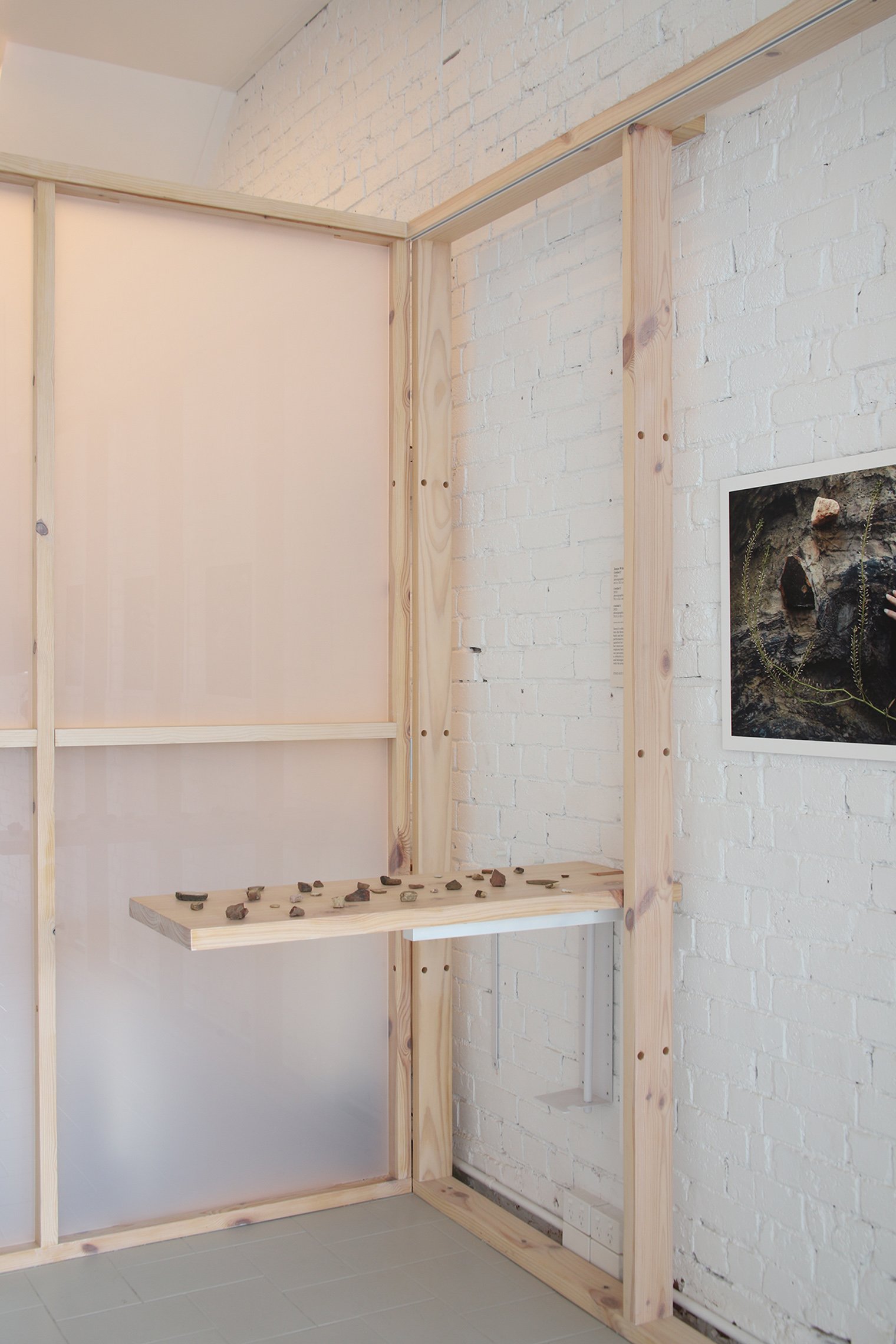

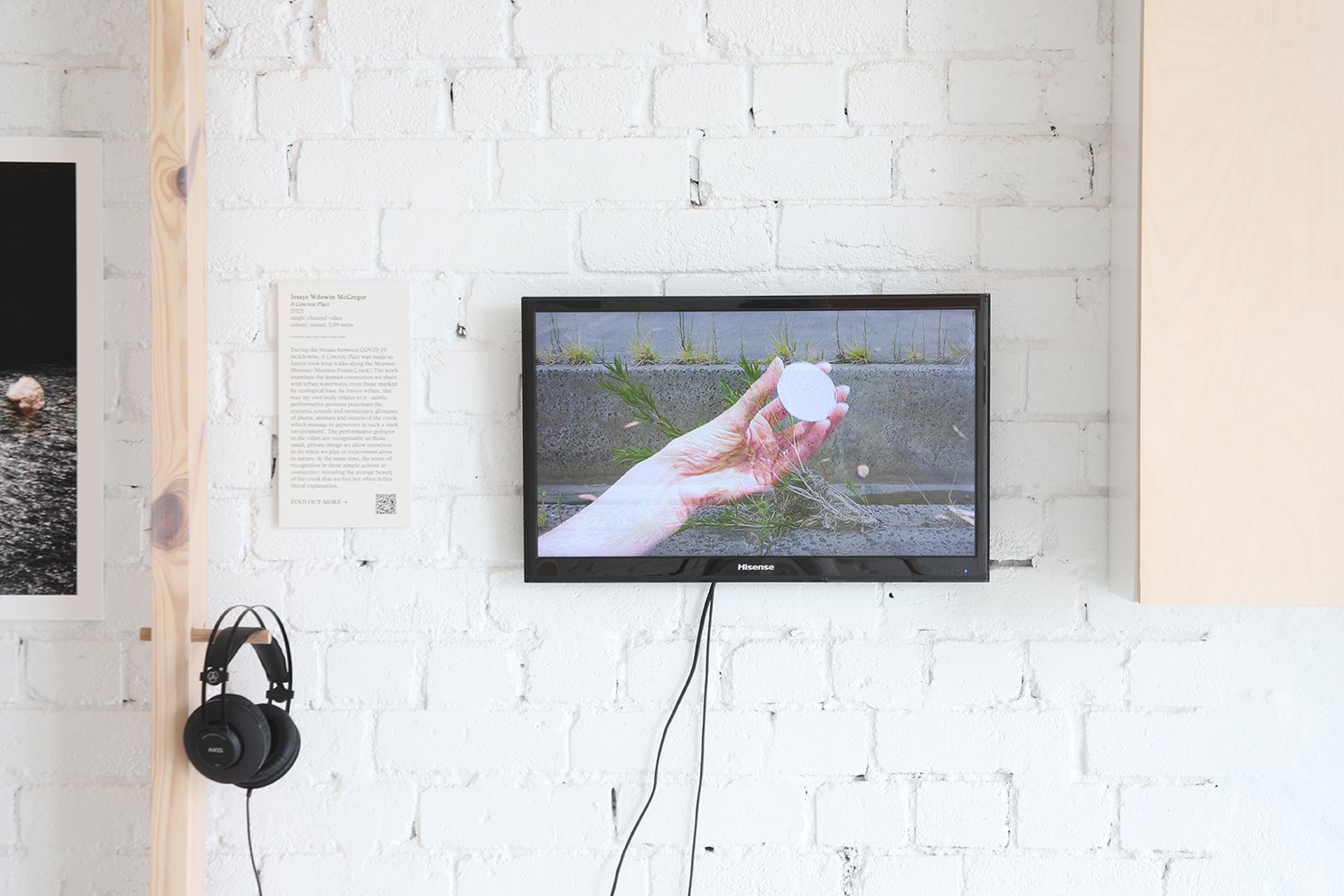
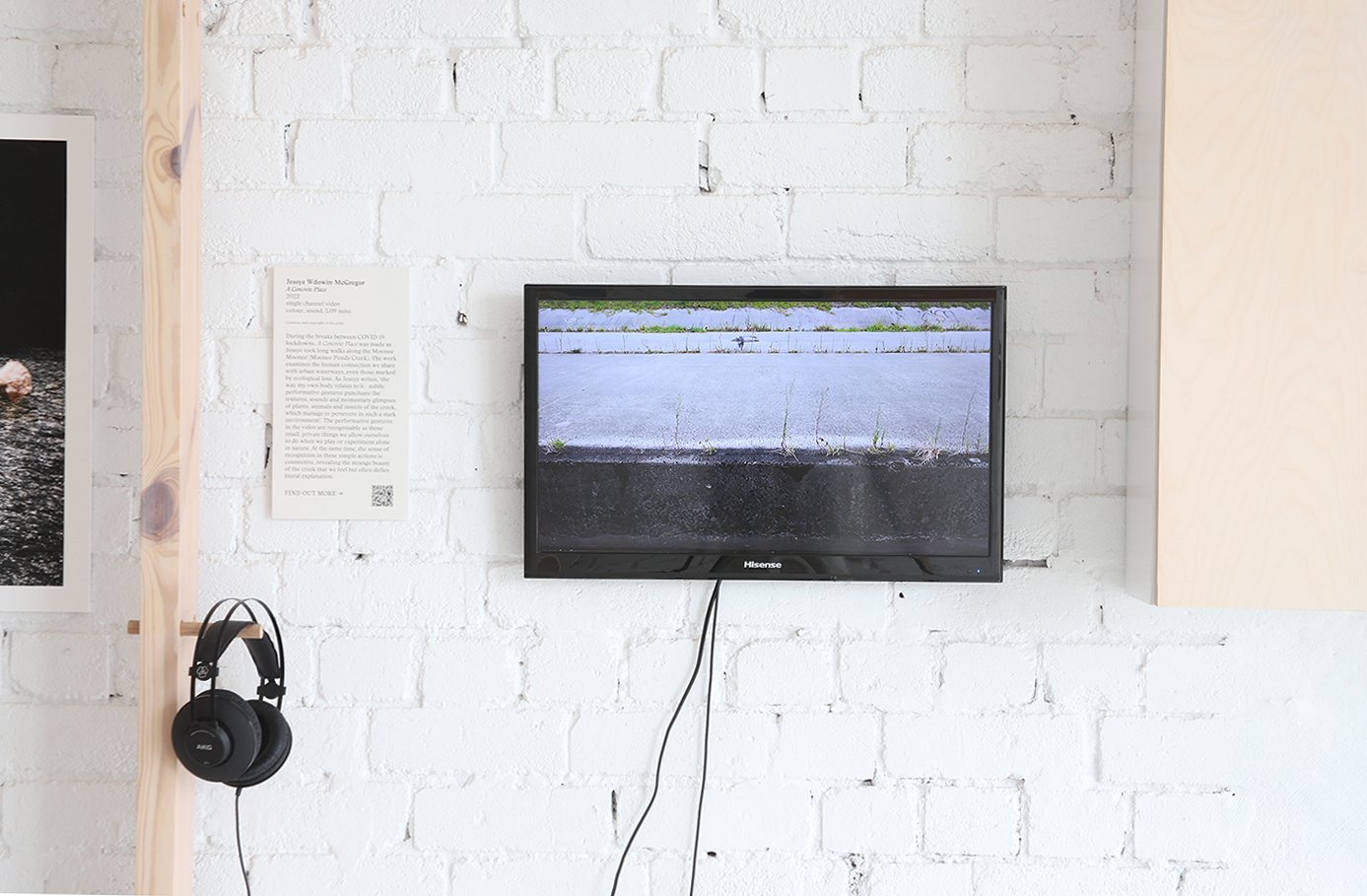
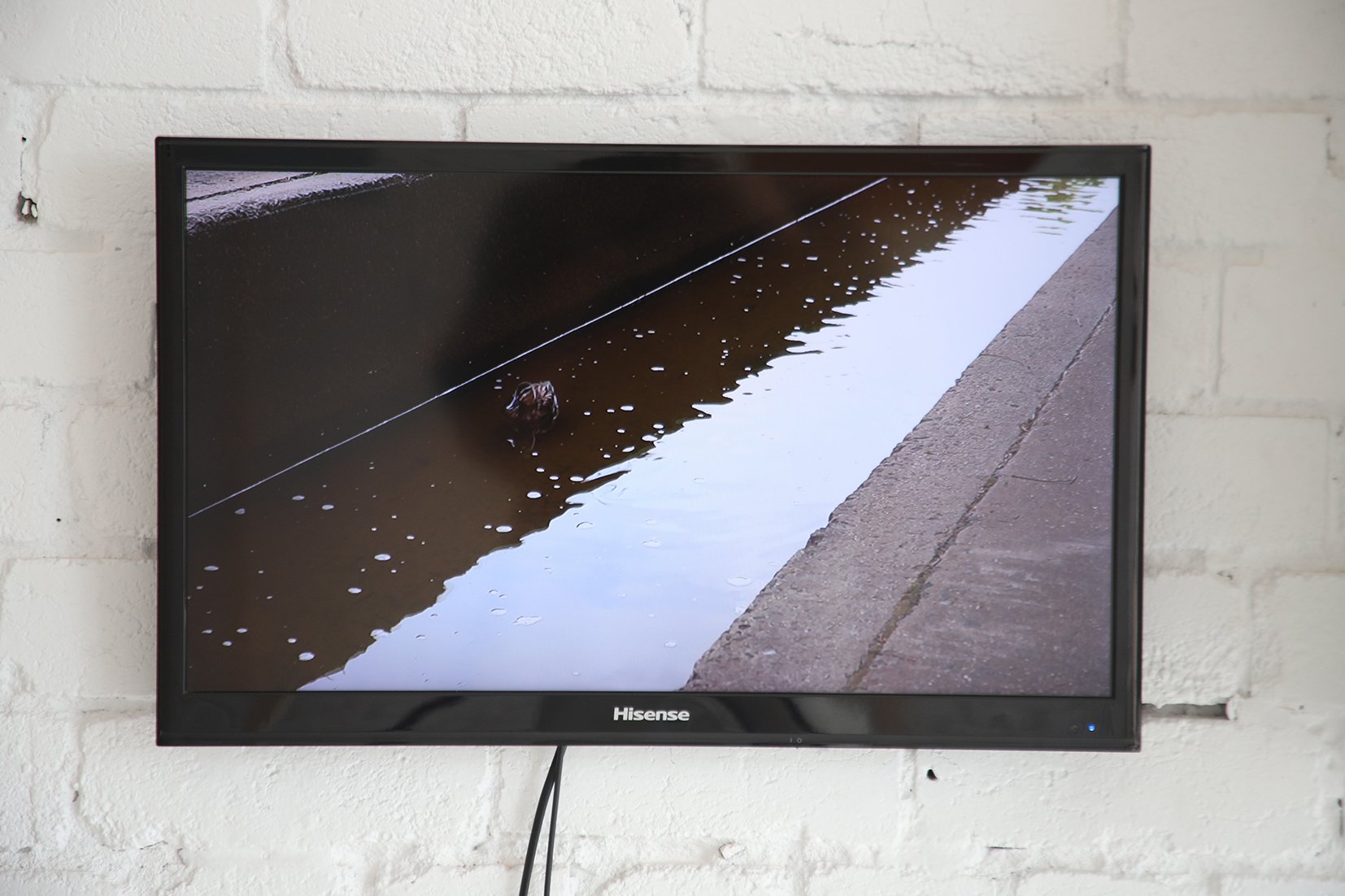
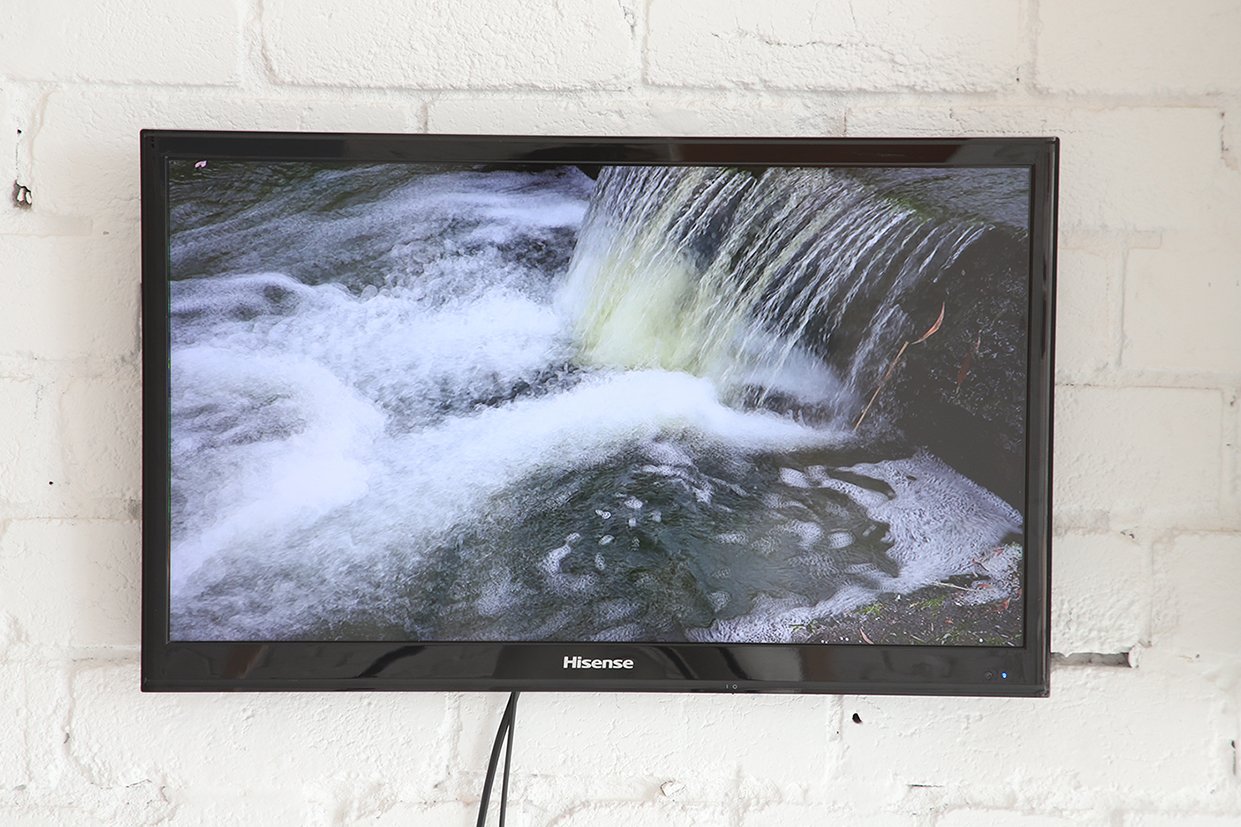
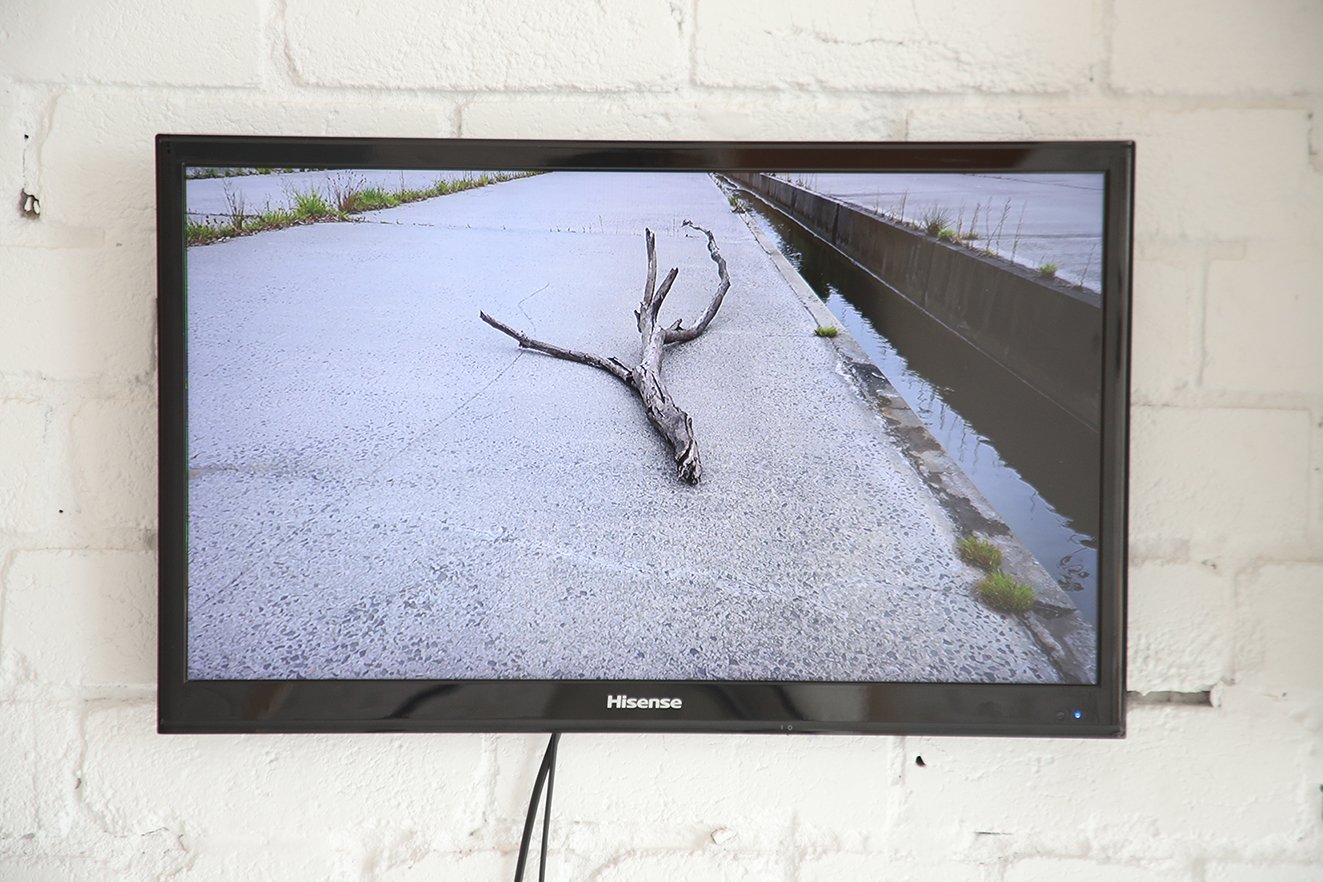
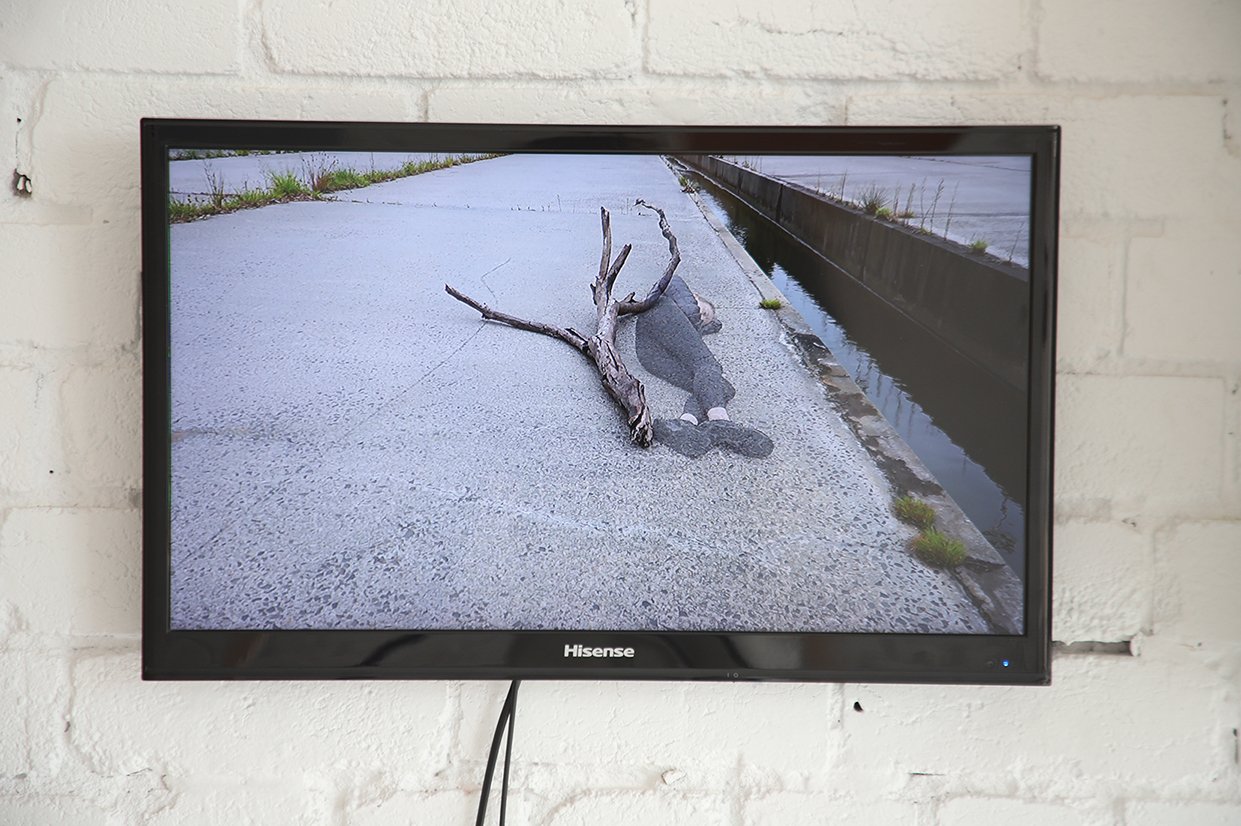
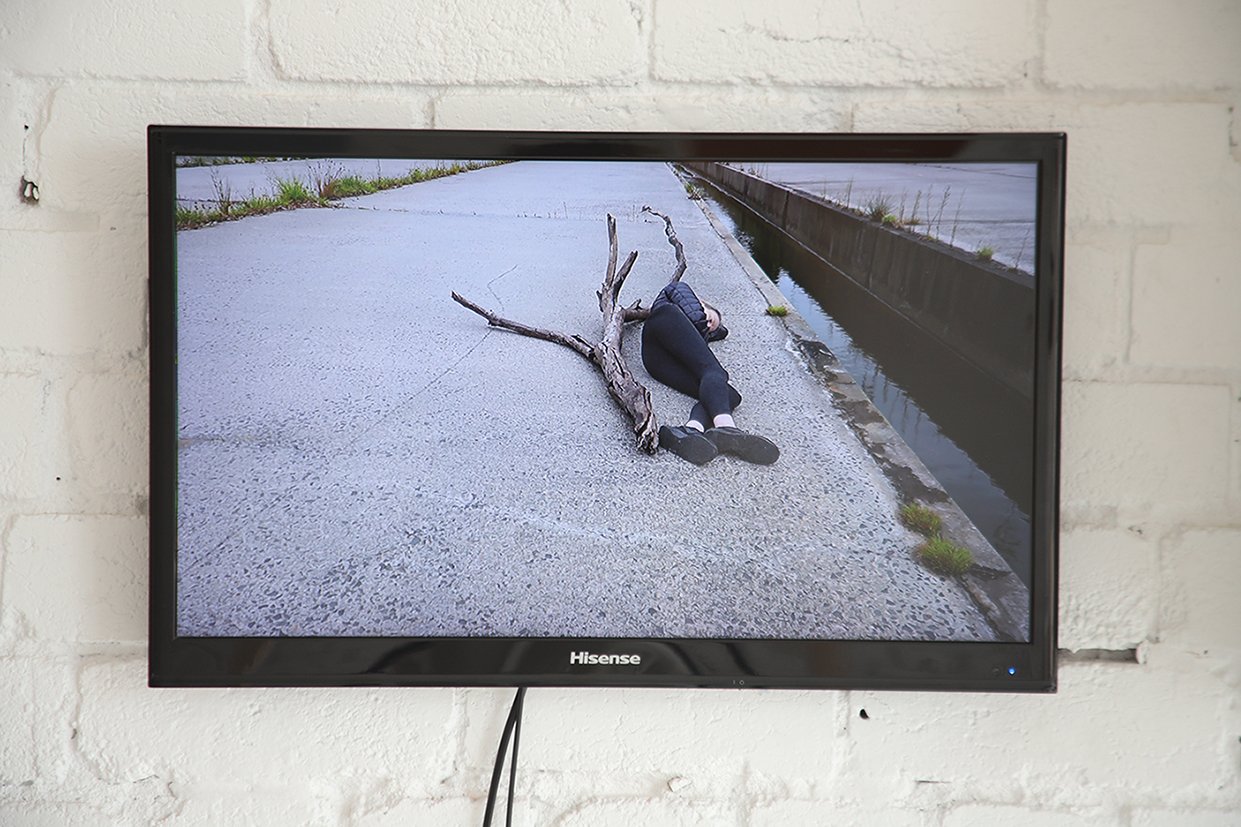
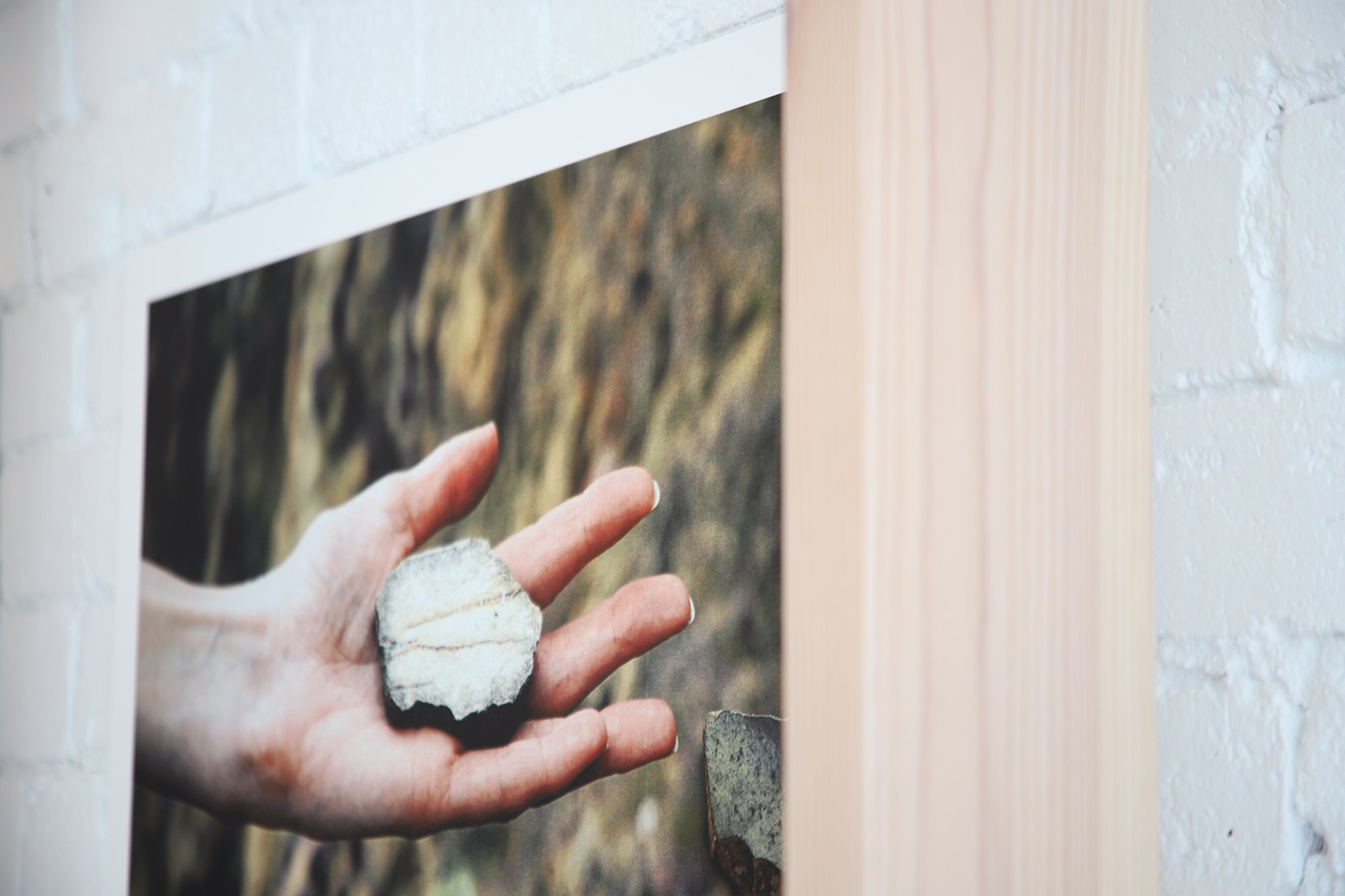

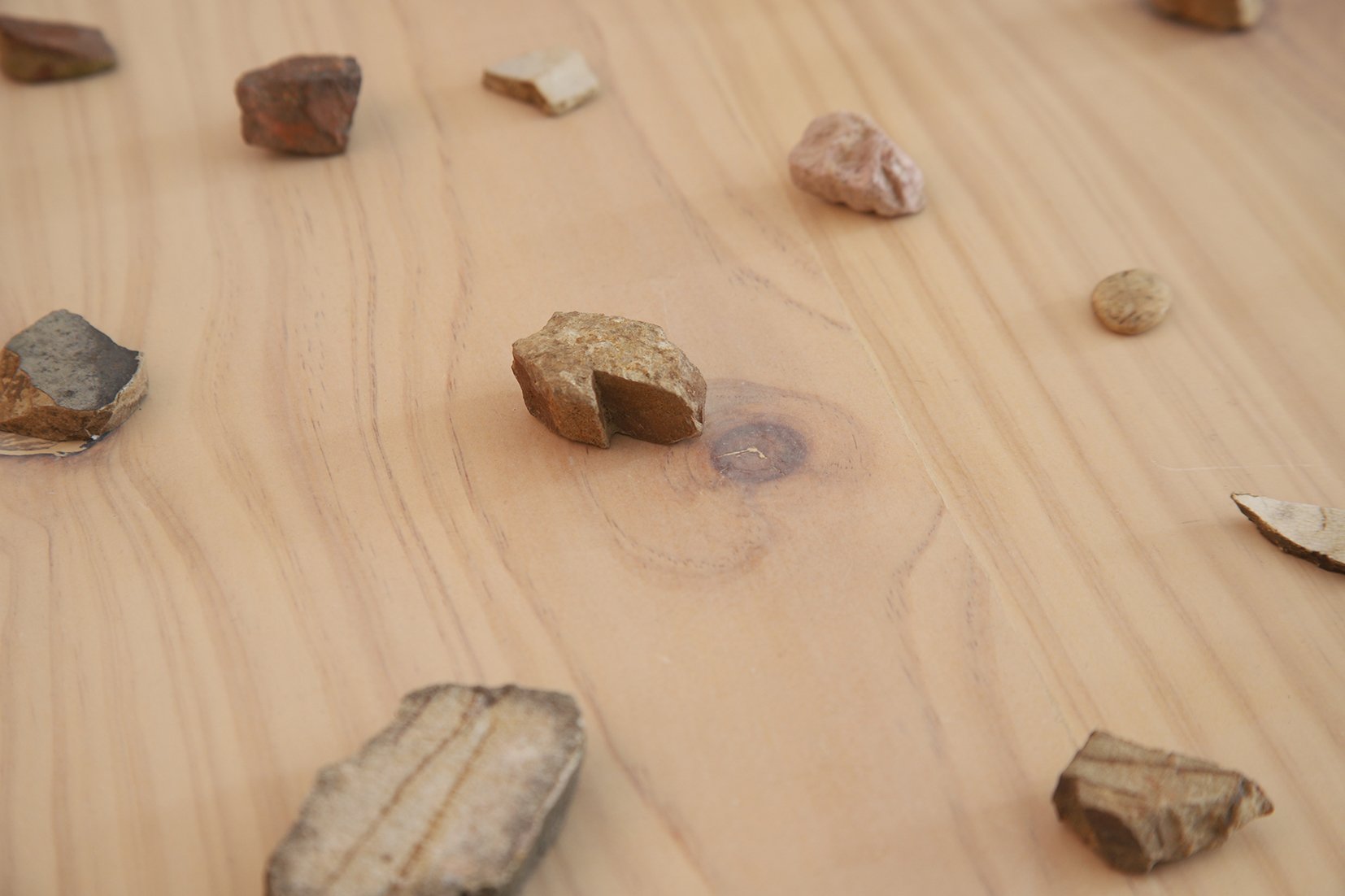
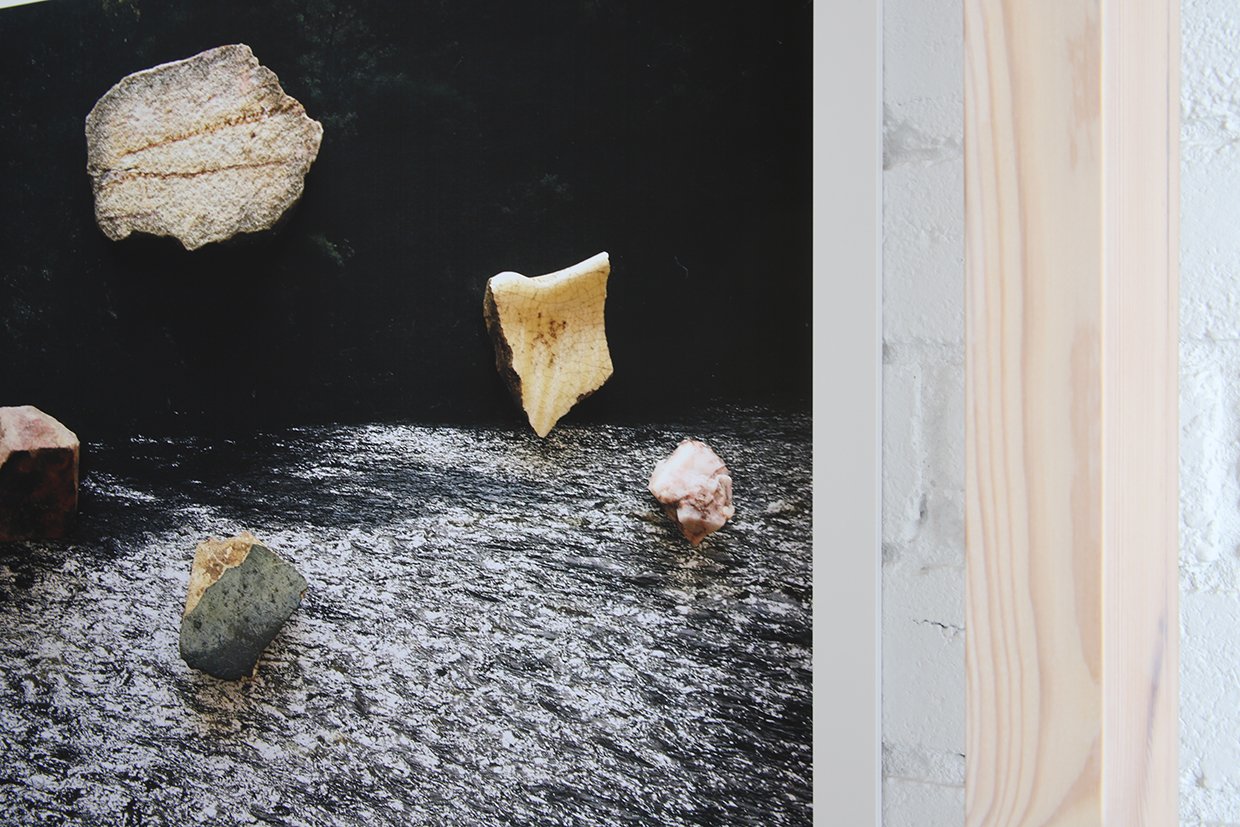
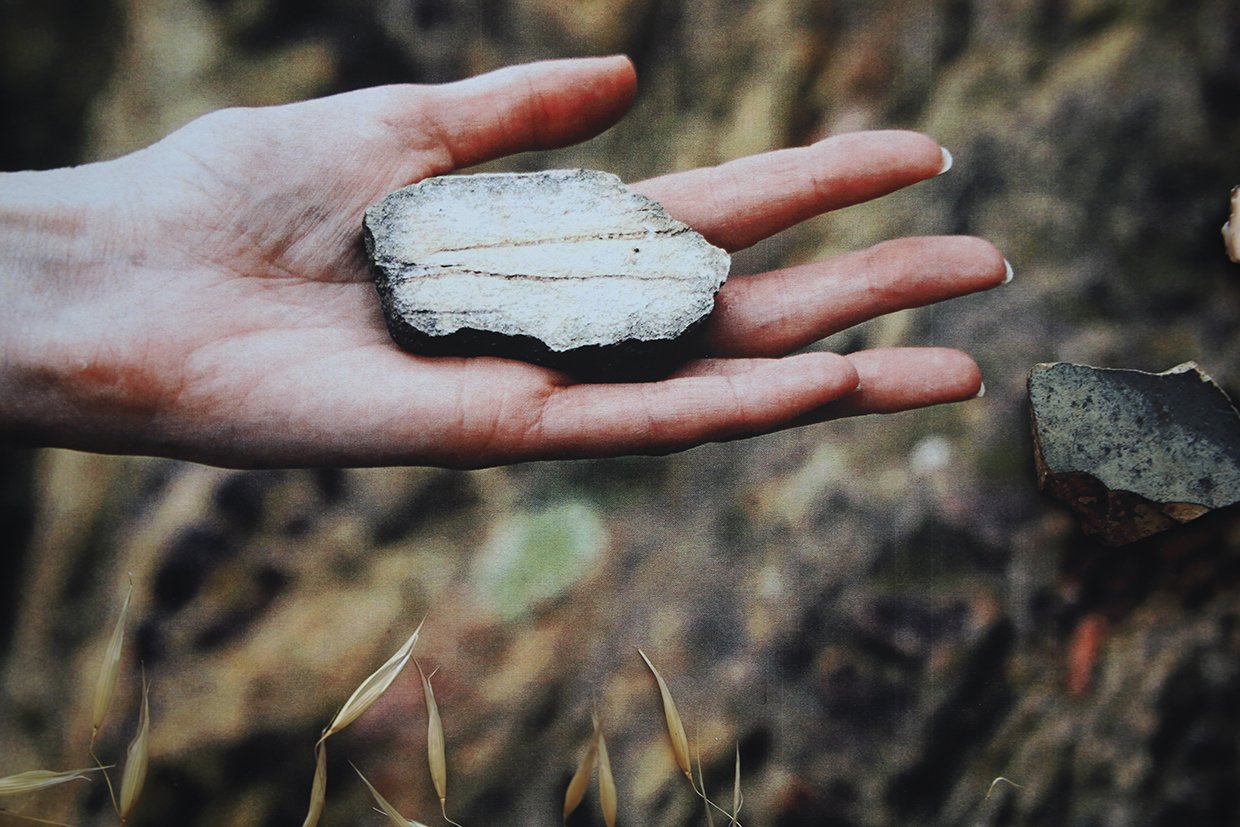
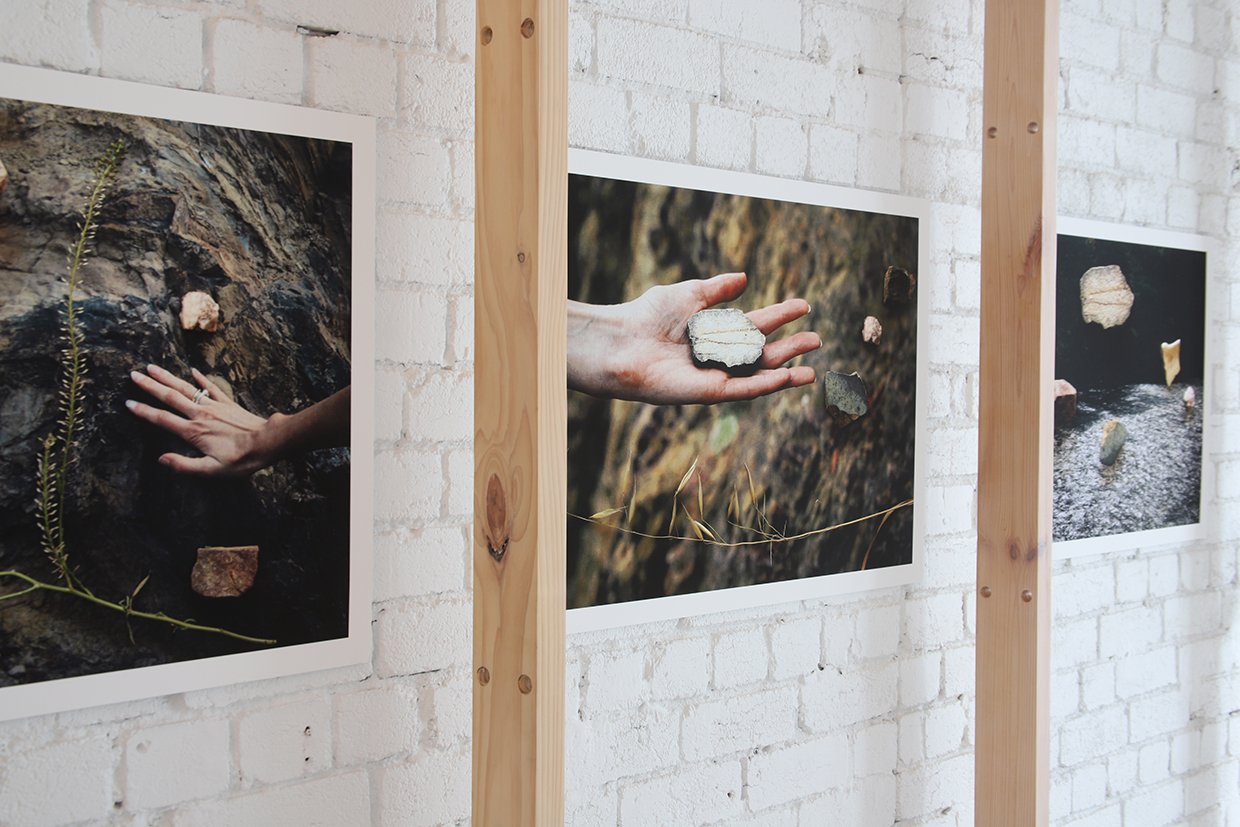
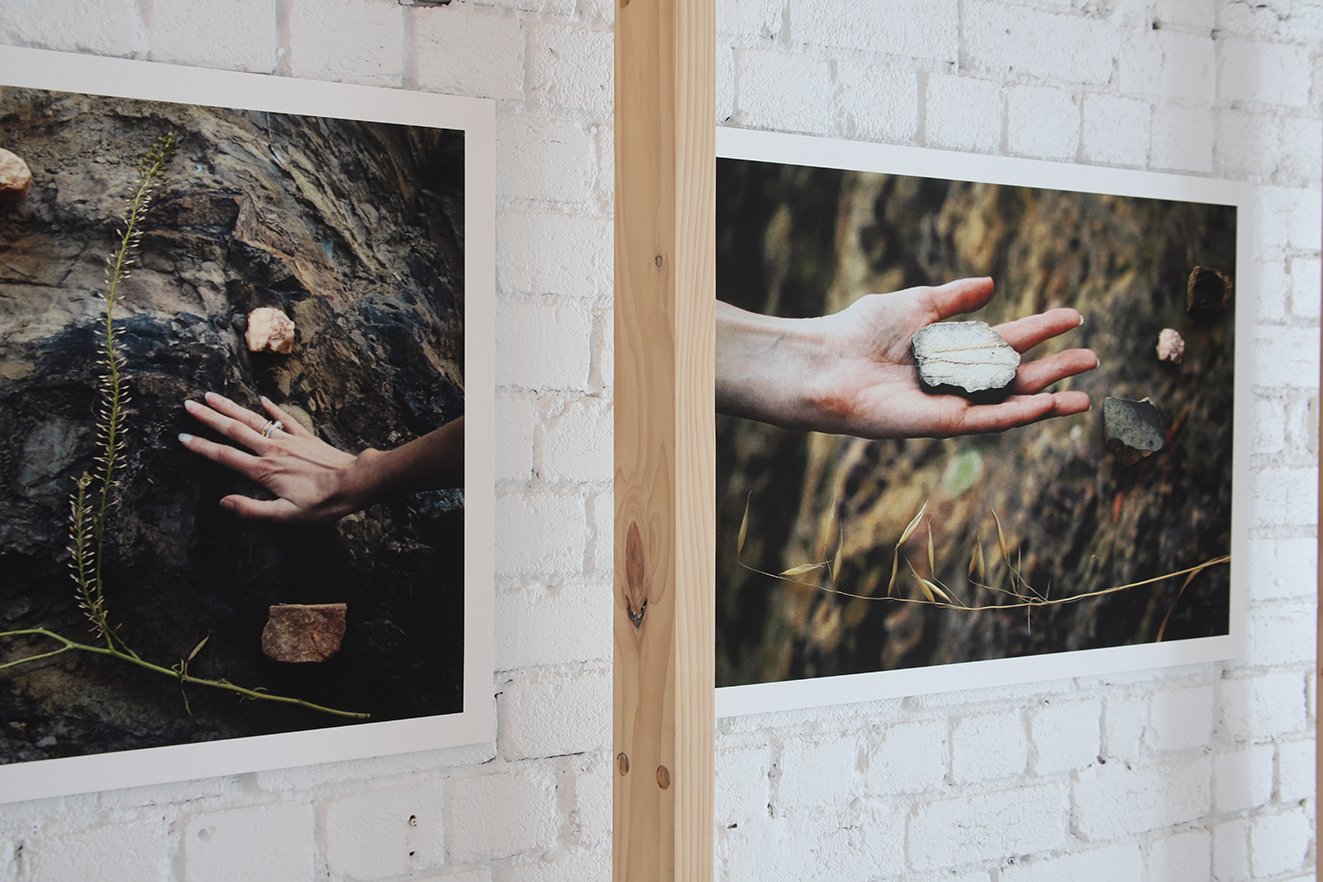
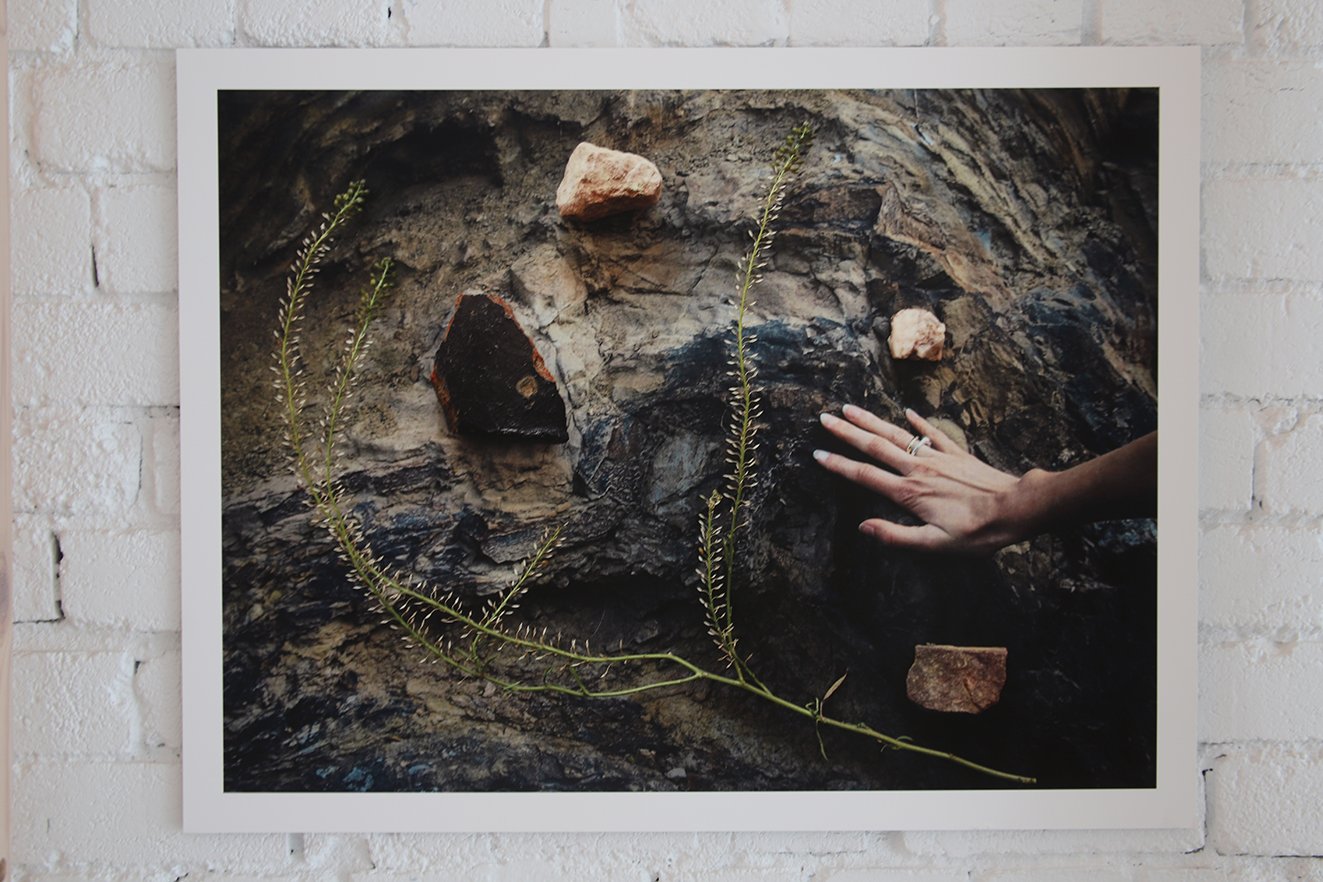
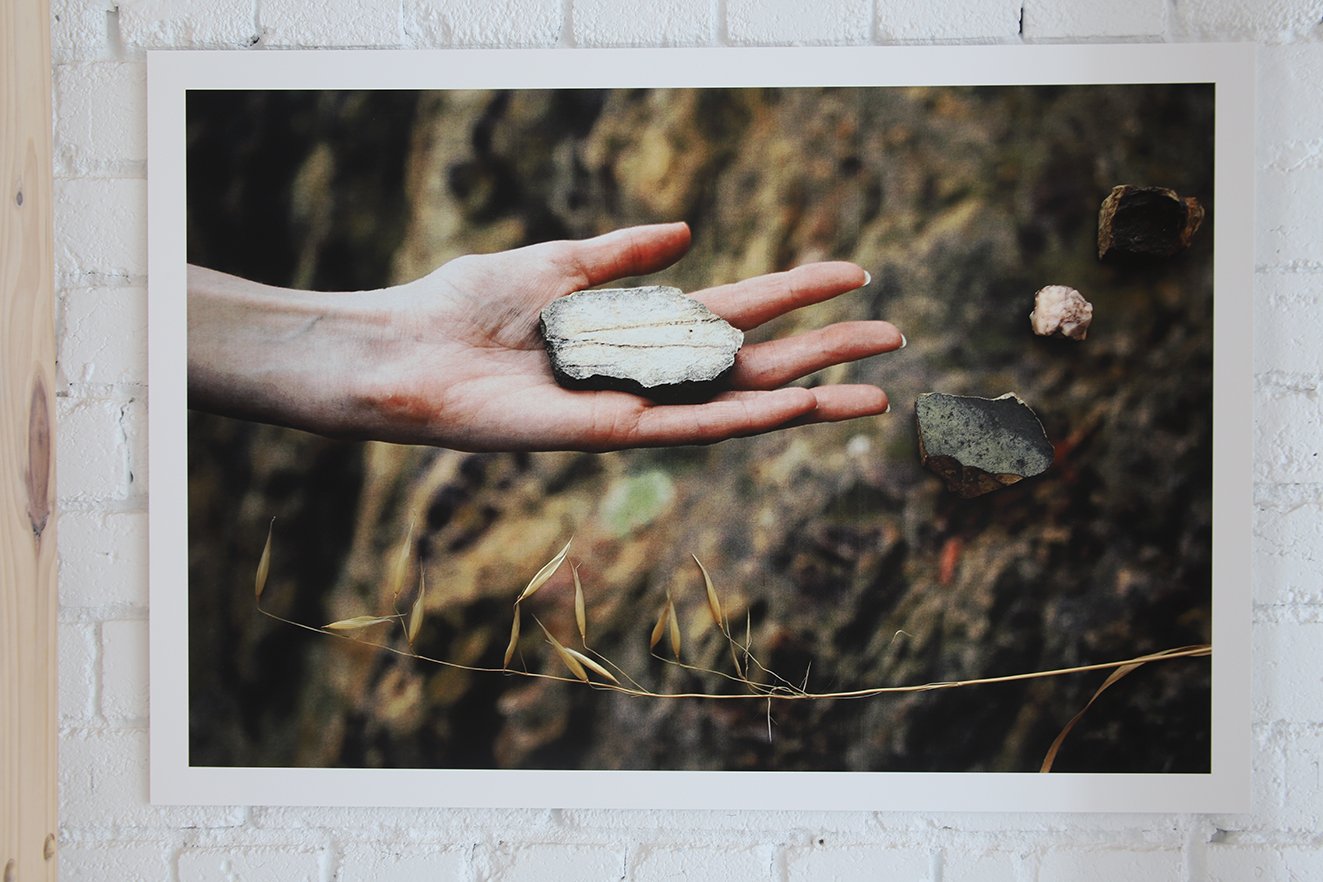
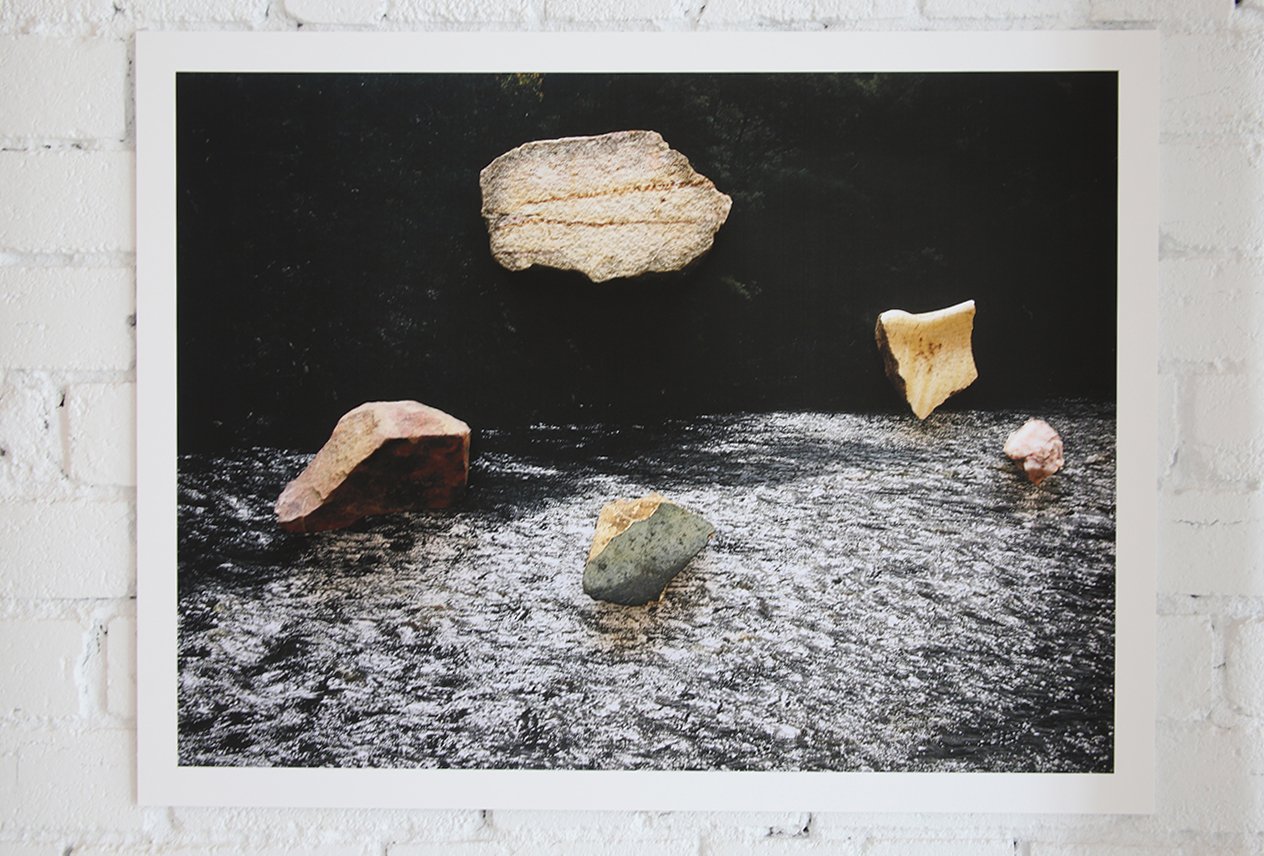
Installation photographs of Jessye’s works installed. © Jessye Wdowin-McGregor Photographs by Ali McCann
Jessye Wdowin-McGregor is a Birrarungga/Melbourne-based artist whose practice spans video, performance, photography, drawing, and collage. A relationship to place underpins much of her work, and she is inspired by environments that are sometimes at the periphery of attention, particularly within the urban realm. She is interested in our entanglements with other species, the thresholds between body and landscape, the human impact on the natural world, spontaneous forms of urban nature, and the elemental infrastructures that shape our surroundings.
For Drawing Sound, Jessye presents new video and photographic collage works, alongside found materials from nature. The starting point for her engagement with the project was her video work A Concrete Place (pictured above), which was made in between the COVID-19 lockdowns as the artist took long walks along the Moonee Moonee (Moonee Ponds Creek).
The work examines the human connection we share with urban waterways, even those marked by ecological loss. As Jessye writes, ‘the way my own body relates to it - subtle performative gestures punctuate the textures, sounds and momentary glimpses of plants, animals and insects of the creek, which manage to persevere in such a stark environment’.
The performative gestures in the video are recognisable as those small, private things we allow ourselves to do when we play or experiment alone in nature. At the same time, the sense of recognition in these simple actions is connective, revealing the strange beauty of the creek that we feel but often defies literal explanation.
These performative gestures found their way into Jessye’s latest series of photographic collages and a new video under development. We talked with her about the artworks and the experience of being involved with Drawing Sound. Read on below to find out more.
Note:—Jessye's works are offered for sale. Pricing is listed in the image captions. To obtain a catalogue, please press the button below and we will send you one via return email. Or, you can head to Jessye’s correspondences Editions page, select the relevant title and purchase directly online.
To return to the ‘main viewing room’ for Drawing Sound, press this hyperlink.
A Concrete Place, 2022, single channel video colour, sound, 5.09 mins © Jessye Wdowin-McGregor
Jessye Wdowin-McGregor (JW-M) and correspondences’ Emma Thomson (ET).
Sitting on a rock with stones & flora 2023, inkjet archival print on Moab Somerset Museum Rag, 85.9. x 59.8 cm (framed) / 78.5 x 52.1 cm (unframed) © Jessye Wdowin-McGregor.
$1,050 (framed, conservation-grade hardwood with UV protective glazing). Edition of 1 (SOLD)
$750 (unframed print) Edition of 3 + 2 APs
ET—1) Jessye, in this image, the found materials from nature that you have used to create the collage effect gently envelop and integrate your body. Looking into the distance, you seem to be sharing a quiet moment with nature that beautifully captures this deep sense of calm that we experience in nature, especially when we are alone. I wondered if you might expand a little on the performative gestures in your works and your long-standing interest in the thresholds between body and landscape.
Secondly, in the exhibition space, we show this photographic collage alongside Genevieve's sound drawing 'Untitled 9', which is presented in diptych format. The diptych reminds me of the coming together of the Birrarung (Yarra river) and the Merri Merri (Merri Creek), where we walked together during our urban bushwalk. Even though we don't see the river in your photographic collage that hangs next to the drawing in the exhibition, there is a visual association between the two works - in the reddish river rocks in the foreground of your work - that, for me, at least, calls to mind the river.
JW-M—1) Thanks, Emma. I’ve always been interested in capturing moments of quiet interaction with a place, where I am present, yet not the focus. Often, I gradually appear and disappear, dissolving into the landscape around me, or acting as a prop for something else, such as a mirror reflecting back the sun. I try to communicate the differing atmospheres and elemental phenomena I encounter, such as weather and light, as well as leaving space for other species, which continually emerge, withdraw, and reappear in my work. I like that the landscape I am in always comes to the fore, and though my presence offers a sense of contrast, I’m most interested in conveying the idea of shifting forms, from body to landscape, vegetation to body, as if the lines between both are falling away.
I really enjoy this observation, the relationship between Gen’s diptych and the confluence of two rivers. There is so much experiential memory in both our works, which are embedded with the daily reverberations of sound-making, the impressions from our walks together along the Birrarung and the Merri Merri, conversations about place and the natural world, and how we respond to the more ephemeral aspects of our surroundings (the sound of water flowing, light, wind, birdsong, the sun rising). I also like the way the tones of the grounds in Gen’s sound drawings are sometimes echoed in the beautiful colourings of the geological formations around the Birrarung, and which can be glimpsed in my photographic collages.
Image with hand, plant and stones 2023, inkjet archival print on Moab Somerset Museum Rag, 69.5 x 52.1 cm mounted (unframed) © Jessye Wdowin-McGregor.
$800 mounted (unframed) Edition of 1
$750 (unframed print) Edition of 3 + 2 APs
ET—2) In this image, the engagement with the body is more peripheral. And yet, your hand touching the rock is so effective. It speaks to our collective sense of touch and its centrality to the human experience of nature and place. In your choice of collaged elements - broken pieces of rock and the fine fragments of plant flora that almost read like the hairlines of a fossil - I can’t help but feel the awesome complexity and ancientness of the bed of rock your hand is touching. Would you tell us a little about the materiality of that place? What drew you towards using collage to communicate the strange beauty of this place - the complex layers, surfaces and textures of this marvellous country?
JW-M—2) These works stemmed out of the invitation from Emma, to spend time along the waters of the Birrarung (Genevieve’s local waterway), particularly where it loops and winds around the bushland of Yarra Bend Park – an important local ecological presence in Gen’s life and a place of respite during Melbourne’s long lockdowns. Alongside the pleasure of feeling immersed within vast tracts of open woodland in the heart of a bustling city, I was drawn to the geology of the area, the sense of deep time embedded in the many outcrops throughout the site. I thought about the slow shifting of ancient rocks, the folding and compression of sandstone and interbedded mudstone, some of which are thought to be ~400 million years in age. It prompted reflection on the way there is movement in stone just as there is movement in water, from fluidity to petrification to stasis, and even then, never permanently fixed.
I’ve long been interested in human-ecological contact in the urban realm and our connectedness to the natural world, in both a haptic and a psychological sense. This has perhaps never seemed more urgent, as we live with the effects of climate change and at a time when many of us have been simultaneously detached from nature and yet deeply craving it during the worldwide lockdowns of 2020 and 2021. In recent video works, my hands literally connect with my environment, whether submerged in a body of water, or touching the surface of a concreted riverbank. At other times, using digital superimposition, water might flood across my body, or I slowly merge with a swaying grassland. I wanted to evoke something similar through the photographic collages, which build on several previous series of works that incorporate the overlaying of plant material atop a printed photographic image, usually gathered from the area I’m filming in. I liked the idea of bringing together an experiential moment of encounter – my hand touching stone – with actual fragments of stone and plant matter, collected from around the Birrarung.
Image with hand, plant and stones 2023, inkjet archival print on Moab Somerset Museum Rag, 78.1 x 52.1 cm mounted (unframed) © Jessye Wdowin-McGregor.
$800 mounted (unframed) Edition of 1
$750 (unframed print) Edition of 3 + 2 APs
ET—3) In this image, the interconnectedness of nature and the body is once again made palpable by the collaged elements that draw associations - your outstretched hang, the fine limbs of the plant, the delicate veins of your arm and hand and the fine striations/lines of the fossilised rock that you’re holding. There is a gentleness in the gesture, but also a sense of the unknown, the magical or the spiritual in those floating rocks that perhaps also speaks of the ever-changing movement of our earth’s complex geology that exists beyond the human perception of time and space. This beautiful sense of movement - of the shimmering river and the rocky country - is also beautifully captured in the last image, River and Stones, 2023. Would you expand a little on these works for us?
JW-M—3) I think the way you describe this image is very beautiful and apt. I was really taken with the tonal variations and textures of the stones I found around the Birrarung, and that I was holding in my hand a particle of something so much older than is almost possible to conceive. The geological strata within the stones share a correspondence to the images themselves in this series, which comprise several layers, of physical objects and images (and images of images), condensed into one plane by the camera. I very much like how you describe the sense of the magical or spiritual in the floating stones; I wanted to capture the vibration that the stones seem to hold, perhaps due to their ancientness, as though they might lift right off the flattened image. The image that includes the shimmering waters of the Birrarung, combines the two elements – earth and water – that I was so struck by, on my visits to walk, film and explore in this remarkable place. Along with the stones, I also collected fragments of brick and ceramic, more recent human traces found embedded in the paths along the river, and yet still connected to the earth. All of these components intertwine and collide, in my attempts to express layers of terrestrial memory, water memory, and human memory.
Image with water and stones 2023, inkjet archival print on Moab Somerset Museum Rag, 70.0 x 52.1 cm mounted (unframed) © Jessye Wdowin-McGregor.
$800 mounted (unframed) Edition of 1
$750 (unframed print) Edition of 3 + 2 APs
ET—4) Jessye, you have also been working on a new video work during the project. It is still developing, but would you tell us a little bit about your plans for this work and what you have been thinking about?
In closing, would you talk a little about the experience of being involved with this project - the cross-overs between your visual arts practice and the experience of walking together in nature and being involved with the musical improvisation?
How do you feel it will shape your future making and your everyday sense of being - your experience of emotional resonance, healing and connectivity with your sense of place?
JW-M—Like A Concrete Place, the video work in development for this project takes a waterway as its starting point. The footage I’ve gathered so far focuses on the oftentimes quiet moments that have caught my eye and ear on the walks I’ve undertaken around Yarra Bend Park – including water in its many forms: shimmering, rushing, rain-dimpled, reflecting, still. I think the film will echo the photographs in places, with my hand tracing the strata of the geological formations surrounding the Birrarung. Alongside this, I also filmed Genevieve during one of the live improvisation sessions that took place as part of the in-situ residency period at correspondences, including the in-between moments in which she is setting up, sound checking and tuning. I filmed her hands in close-up, moving across the strings of her harp. I became interested in the idea of connecting my experience of the riverscape with Gen’s playing, as both have felt so closely entwined during the project. I see the film as a series of encounters between landscape, stone, water, music, bodies (both human and more-than-human).
The opportunity to be part of this wonderful project has left a lasting impression on me. As someone who works for the most part in solitude in the studio, it was a step outside the familiar. To be present in the space for the live music improvisation sessions with Gen, to create sound textures alongside her during some of those sessions, to allow my work to unfold in-situ, and to think through conversation and shared experience, all while engaging directly with visitors / participants, was a special occurrence. I think what made the process flow with such ease, is Gen’s openness to collaboration; the way she invites you into her music, and her responsiveness to all different forms – whether that be field recordings, visual stimuli, writing, dialogue, etc. – as well as her sensibility for expressing something about place that can be hard to put into words. For some time I’ve wanted to work together with a musician, to bring other layers of sound and interpretation, particularly in relation to my video pieces. So it has been a privilege to spend the past few weeks with Gen, to be transported by her playing, and sharing in her connectedness to the natural world.
I feel the project has opened up new ideas and ways of working, that are already having an impact on my thinking. Because it was such a condensed and highly productive period, I’m still reflecting on my experiences, but being part of ‘Resonate’ has allowed me to embrace a sense of fluidity – in making, in collaborating, and in sharing in a process with others. It also reinforced the sense of possibility in drawing from personal encounters with place, and how walking (both alone and in company) is a creative and healing practice. Thank you, Emma, for the invitation to participate in this unique project, for bringing Gen and I together, and connecting us to the correspondences community; your unwavering support, energy and passion has been at the very heart of ‘Resonate’.